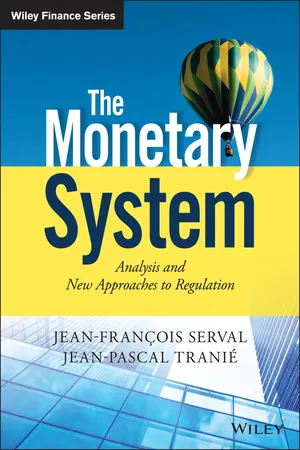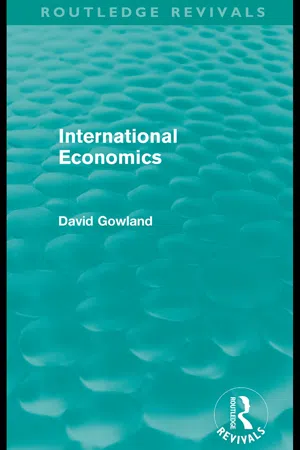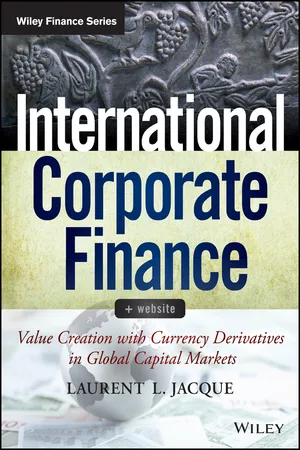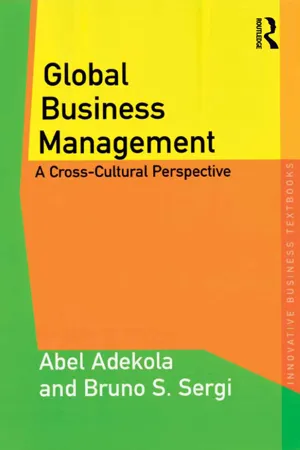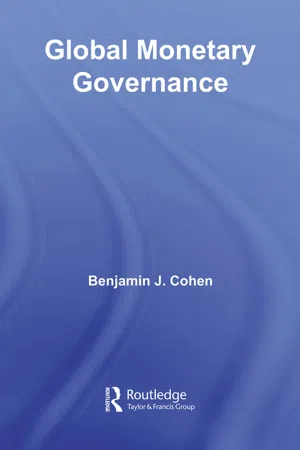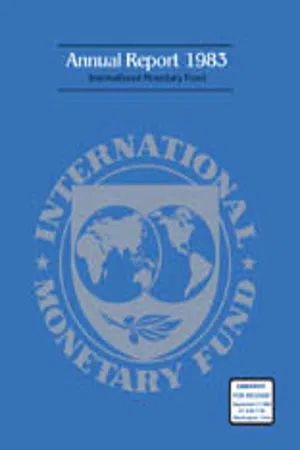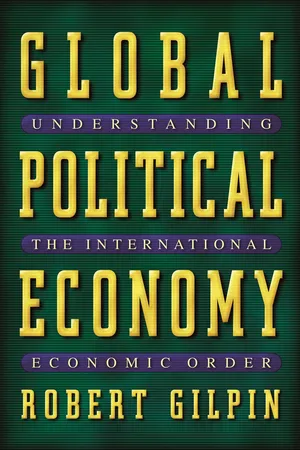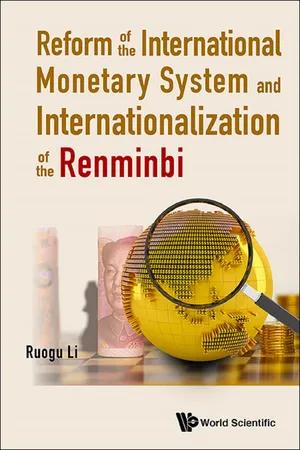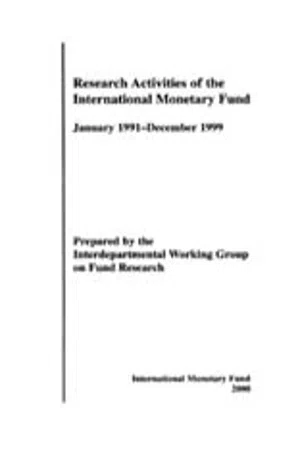Economics
International Monetary Systems
International Monetary Systems refer to the framework of rules, institutions, and agreements that govern international financial transactions and exchange rates between countries. These systems play a crucial role in facilitating global trade and investment by providing stability and predictability in currency exchange. Different international monetary systems have evolved over time, including the gold standard, Bretton Woods system, and the current floating exchange rate system.
Written by Perlego with AI-assistance
Related key terms
10 Key excerpts on "International Monetary Systems"
- eBook - ePub
The Monetary System
Analysis and New Approaches to Regulation
- Jean-François Serval, Jean-Pascal Tranié(Authors)
- 2014(Publication Date)
- Wiley(Publisher)
CHAPTER 7 The Monetary System “The one who aims at becoming knowledgeable, has to deal with money regulation” 1 — Bata batra 175b INTERNATIONAL EXCHANGES – INTERACTIONS AND MONETARY ZONE COHERENCE There is no possible monetary system set-up without a regulatory system that guarantees the link, meaning the measurement language between posted numbers and exchanges, to ensure acceptance from users and to pursue social goals. Money requires a sufficient space of use that can only result from trust and jurisdictional authority, usually both intricately mixed. Logic leads us to start from where we stand in terms of regulation. We think we have sufficiently explored money as a concept to cover our general needs. We are still missing international exchanges, though. Having tried to comprehend what money is, the issue of looking at the international monetary system that, not surprisingly, has changed since WWII is now to be analysed. Even if still formally or implicitly existing as set after Bretton Woods, it has been deprived of its post-war purpose, and moreover in 1971, as we have already seen, of its mechanisms to ensure a currency basis. More recently, it has been reconsidered and completed to give face to the 2007–2008 financial crisis that hit the entire world with, until now, no definitive answers and international decisions. With consolidation of political entities, the jurisdiction where money is in use and its optimization are also at stake as a question for the international forums that may be able to find a way and decide on a new system: the G20, the IMF or any forum where major countries can convene. GENERAL FRAMEWORK As its ideogram indicates, 2 meaning both danger and opportunity at the same time, the crisis can also be used as a new start. The threat of a systemic collapse that prevailed during a few weeks during the autumn of 2007 determined some analysis about what is grounding the market economy and liberalism, of which a few points emerged - eBook - ePub
- David Gowland(Author)
- 2010(Publication Date)
- Routledge(Publisher)
12 THE INTERNATIONAL MONETARY SYSTEM12.1 History
There are three major aspects to any international monetary system:1. the exchange rate regime; 2. arrangements for co-operation between nations, in practice usually between their central bankers; 3. arrangements for loans to be extended to nations, either by other nations on a bilateral basis or multilaterally through an international agency.Any analysis must concentrate on these, whether historical or descriptive or prescriptive. Analysts may also wish to differentiate between the way the system works and the formal mechanism, rather as constitutional scholars since Bagehot have distinguished the ‘efficient’ from the ‘dignified’, the reality from the formal system.The modern history of the international monetary system starts with the Bretton Woods conference of 1944, which was a major part of the Anglo-American efforts to ‘reconstruct’ the world which also led to the formation of the UN, GATT and, at a domestic level, the National Health Service. Bretton Woods led to the establishment of the system which bore its name. The exchange rate regime was to be one of flexible parities, a semi-fixed system, described above, p. 120. The parities were to be adjusted in the event of ‘fundamental disequilibrium’ after a process of international consultation. In practice, this was a dead letter and the ‘efficient part’ of Bretton Woods was an informal understanding that par values would not be changed very often nor without an effort to avoid the change. In other words devaluation would not be an ‘easy’ or ‘costless’ option. The system was often called the dollar exchange system, as the parities were set in terms of dollars. Although this convention was a reflection of US dominance, it paradoxically meant that the US could not devalue without breaking the system up. - No longer available |Learn more
International Corporate Finance
Value Creation with Currency Derivatives in Global Capital Markets
- Laurent L. Jacque(Author)
- 2014(Publication Date)
- Wiley(Publisher)
PART One The International Monetary EnvironmentPart One examines the monetary environment within which international corporate finance decisions are made. How exchange rates are determined and the unique role played by central banks’ intervention in setting currency values are the focus of Chapter 2, whereas Chapter 3 presents a brief history of the international monetary system. The architecture of the world economy is outlined in Chapter 4 through the lens of national balance of payments accounting, which records the key flows linking national economies.Passage contains an image
CHAPTER 2 Exchange Rates Regimes
So much of barbarism, however, still remains in the transactions of most civilized nations, that almost all independent countries choose to assert their nationality by having, to their inconvenience and that of their neighbors, a peculiar currency of their own.John Stuart MillThe breakdown of the international monetary system of fixed exchange rates that had prevailed until March 1973 under the Bretton Woods (1944–1971) and the short-lived Smithsonian (1971–1973) agreements ushered the world economy into uncharted territory. The new international financial order that has emerged in its stead is commonly characterized as a system of floating exchange rates. Such a characterization, however, is misleading since it applies to only a handful of major currencies that float independently, such as the U.S. dollar ($), the Japanese yen (¥), and the euro (€). Most other currencies are actually closely managed by their respective central banks when they are not pegged to or tightly controlled vis-à-vis the U.S. dollar, the euro, or a basket of currencies.This chapter develops a framework for understanding how exchange rates are determined and how different exchange rate regimes have developed in each country. It sheds light on the conceptual foundations of the three major systems of exchange rate determination within which actual exchange rate forecasts have to be made. In the companion Chapter 3 we illustrate how exchange rates regimes have been implemented over time by providing a brief history of the international monetary system. - eBook - ePub
Global Business Management
A Cross-Cultural Perspective
- Abel Adekola, Bruno S. Sergi(Authors)
- 2016(Publication Date)
- Routledge(Publisher)
Chapter 4The Impact of Economics and the International Monetary Framework on International Management
The international manager’s knowledge of economics and the monetary framework plays an important role in a multinational enterprise. Knowledge of these functions is important because the economy in each country is constantly changing. To make decisions in the rapidly changing global economy, managers need to have background knowledge of key economic and monetary fundamentals, and how these fundamentals affect multinational corporations.International managers need to have a global economic perspective and the ability to learn its trends. These managers need the ability to be able to decide which project in one country is more important than in another country. Furthermore, international managers have to know how to reduce delivery costs to take advantage of economies of scale and reduced transport costs and tariffs. They also have to know how to substitute lower cost foreign suppliers and reduce delivery costs. Similarly, managers need to have an understanding of changing economies and the implications of this change for the strategy and operations performance of their business.In a market system, individuals or organizations trade in order to benefit or realize profit from the exchange. As a result, trading occurs in nations as well as among regions within a given country. Trading among nations involves the Foreign Exchange Market (FEM). The FEM is a network of financial institutions around the world. The FEM facilitates trade and assists international businesses by buying and selling (trading) foreign exchange. The foreign exchange rate, also known as the international exchange rate, is the value of one country’s currency in terms of another country’s currency. This section will discuss the origins of money, monetary systems, monetary issues, and the measures of value of the economy. An international manager must have basic knowledge of how the following key fundamentals affect an economy in relation to the multinational corporation. - eBook - ePub
Dilemmas of the Dollar
Economics and Politics of United States International Monetary Policy
- C. Fred Bergsten(Author)
- 2017(Publication Date)
- Routledge(Publisher)
Part I The International Monetary System -Myth and RealityPassage contains an image
1 The United States and International Monetary ReformThe Purpose of This Book
This book is about the effects of alternative international monetary arrangements on the national interests of the United States. Its method is to analyze the costs and benefits of the alternatives to the United States, by applying a number of economic and political criteria to each. Its objective is twofold: to deepen understanding of the impact of different monetary arrangements on the United States and to propose an approach to international monetary policy for the United States that will maximize the benefits for it.The book thus differs markedly from almost all of the previous voluminous literature on international monetary issues. Most analysts have sought to explain the operation of the monetary system from a global standpoint, and virtually all proposals for reform have been based on global criteria, assuming implicitly that each individual country would benefit from a system that provided the best worldwide framework. To be sure, the United States has a major national interest in the effective functioning of the overall monetary system, and this book devotes much attention to that issue. But the economic and political interests of the United States go well beyond the smooth functioning of the system itself, to the specific nature of the very different kinds of conceivable international monetary arrangements. They are the focus of this book.A second fundamental difference between this book and most other efforts in the field is its explicit effort to integrate economic and political considerations in order to maximize the usefulness of its analysis for policy-making in the real world. Numerous economists have developed elegant models of optimum adjustment devices and international reserve arrangements. A few political scientists have addressed the international monetary issue from the standpoint of its effect on overall relations among nations. But integration of the two approaches has been exceedingly rare, and is absolutely essential to understand the effects of the dollar's role in the past and the implications of its different potential roles in the future. This book attempts to develop such an approach. - eBook - ePub
- Benjamin J. Cohen(Author)
- 2007(Publication Date)
- Routledge(Publisher)
The existence of separate national currencies has both economic and political implications. Economically, monetary sovereignty means that currencies that are legal tender in one place are unlikely, with few exceptions, to be fully useable elsewhere. From that tradition stems the need for mechanism and arrangements, such as the foreign-exchange market and other financial institutions, to facilitate transactions and interchanges between national moneys and credit systems. Politically, monetary sovereignty means that governments must necessarily be concerned about the balance of payments – the overall relationship between foreign revenues and expenditures. More precisely, they must somehow reconcile the twin – and often conflictual – macroeconomic policy goals of “internal balance” (full employment with low inflation) and “external balance” (equilibrium in the balance of payments). Since, normally, domestic money is not generally accepted outside the state’s territorial frontiers, payments deficits cannot ordinarily be managed simply by printing more of one’s own currency. Either adequate financing (“international liquidity”) must be found or appropriate policy adjustments must be undertaken via changes of domestic spending, the exchange rate, or trade and capital controls. From that tradition stems the need for mechanisms and arrangements, concerning such matters as currency values and access to credit, to minimize frictions and, if possible, to facilitate cooperation in financial management.It is in the interaction of these twin economic and political imperatives – the ever-shifting relations among states and between states and markets – that we find the challenge of global monetary governance.From Bretton Woods to “non-system”
The Bretton Woods system is commonly understood to refer to the monetary regime that prevailed from the end of World War II until the early 1970s. The result of protracted wartime discussions, the Bretton Woods system was history’s first example of a fully negotiated order intended to govern monetary relations among sovereign states. Based on a formally articulated set of principles and rules, the regime was designed to combine binding legal obligations with multilateral decisionmaking conducted through an international organization, the IMF, endowed with limited supranational authority.Central to the Bretton Woods system was an exchange-rate regime of “adjustable pegs.” Countries were obligated to declare a par value (a parity or “peg”) for their national money and to intervene in currency markets to limit exchange-rate fluctuations within certain margins (a “band”), though they also retained the right, in accordance with agreed procedures, to alter their parity when needed to correct a “fundamental disequilibrium” in their external payments. The IMF was created to assure governments of an adequate supply of financing, if and when required, as well as to provide a permanent institutionalized forum for interstate cooperation on monetary matters. International liquidity was to consist of national reserves of gold or currencies convertible, directly or indirectly, into gold – the so-called “gold-exchange standard” – later supplemented by Special Drawing Rights (SDRs), a negotiated form of “paper gold.” The main component of liquidity was the U.S. dollar – America’s fabled greenback – the only currency at the time that was directly convertible into gold. - eBook - ePub
- International Monetary Fund(Author)
- 1983(Publication Date)
- INTERNATIONAL MONETARY FUND(Publisher)
Chapter 2Developments in the International Monetary System
The economic and financial difficulties faced by many governments and the banking community over the past year have focused attention on the role that might be played by the international monetary system in fostering a more orderly world economic environment. This chapter deals with developments in two principal features of that system. First, the exchange rate arrangements and exchange rate policies of members are reviewed, and this examination is followed by an account of the Fund’s surveillance over these policies. The second topic, international liquidity, records the circumstances leading to changes in official reserve holdings and in the availability of private credit extended across national borders, and discusses the role of the Fund in providing conditional and unconditional liquidity to its members.Passage contains an image
Exchange Rates and Surveillance
The exchange rate system remained subject to considerable stress during 1982 and the first half of 1983. In the industrial world, the exchange rates of the major currencies continued to be subject to pronounced swings; the most significant movements were the renewed appreciation of the U.S. dollar and the further depreciation of the Japanese yen through October 1982, both of which were only partly reversed by subsequent developments. There were also recurring periods of tension within the European Monetary System (EMS), leading to two realignments of central rates in 1982 and one in the first quarter of 1983. Finally, the currencies of a number of smaller industrial countries underwent sizable devaluations, some of which were viewed by trading partners as being possibly too large.In the developing world, the stress was related mainly to the worsening external positions of many countries and the emerging risk of a serious financial crisis. As discussed in Chapter 1 - eBook - ePub
Global Political Economy
Understanding the International Economic Order
- Robert G. Gilpin(Author)
- 2011(Publication Date)
- Princeton University Press(Publisher)
Eichengreen argues that these economic and political changes have restricted possible international monetary arrangements to either (1) an international monetary system based on freely floating exchange rates, or (2) monetary unification among groups of countries to enable creation of single currency areas managed by regional central banks. Freely floating exchange rates would be a step away from an integrated, rule-based world economy, as such an arrangement could have few, if any, rules governing such technical matters as exchange rate adjustment and liquidity creation. Under such a monetary arrangement, an individual nation could intervene in the market to guide the floating rate of its currency but could not set and hold to a targeted value. Therefore, the means to guarantee a stable international monetary system, Eichengreen has argued, is complete monetary integration; that is, creation of a single currency managed by a central bank. However, as the twenty-first century opened, the only effort to achieve monetary unity was that in Western Europe.Many economists and public officials believe that Eichengreen’s analysis is much too pessimistic, and few are willing to give up the search for an effective means to stabilize exchange rates through an international monetary authority, international policy cooperation, or some other mechanism. However, many would undoubtedly agree that an effective governance mechanism must soon be devised to manage international monetary affairs in order to avoid the real danger that the monetary system will disintegrate either into monetary anarchy similar to the 1930s or will fragment into regional arrangements based on such dominant regional currencies as the American dollar, the euro, or the Japanese yen. A stable international monetary system must rest on the cooperation of the major economic powers, a situation that has not been easy either to establish or to maintain.UNITY OR FRAGMENTATION OF THE MONETARY SYSTEM ?
Creation of the European Monetary System (EMS) and the common currency (euro) pose a serious threat to the unity of the international monetary system. There is considerable interest and disagreement among public officials, economists, and political pundits on both sides of the Atlantic Ocean and in other parts of the globe concerning the implications of the euro for the dollar and the international economy in general. The most important questions are whether or not the euro will displace the dollar as the world’s principal currency, what the consequences for the United States would be if it did, and how the euro would affect the functioning and management of the international monetary and economic system. The large number of economic and political unknowns surrounding the euro make it impossible to provide any conclusive answers to these and other relevant questions. Nevertheless, these issues are of such moment for the future of the global economy that they must be addressed, even if only tentatively. - Ruogu Li(Author)
- 2015(Publication Date)
- WSPC(Publisher)
Part TwoThe Current International Monetary SystemAfter experiencing many dollar crises between 1960s and 1970s, the Bretton woods system finally collapsed. In 1971, the United States abandoned the convertibility of the dollar into gold, thereby starting an era of floating exchange rates. Even though the United States was no longer obliged to convert the dollar to gold when required, its core status in the international monetary system remained unchanged. This caused many unfair and unequal practices in international economy. This part begins with an analysis of the characteristics and the functioning of the current international monetary system. It then makes an appraisal of the system, pointing out both its positive functions and the inherent conflicts in it. It ends with a conclusion on the unsustainability of the current international monetery system.Passage contains an image
Chapter 5
Characteristics of the Current International Monetary System
Following the collapse of the Bretton Woods system, the international monetary system again sank into chaos. The international community made many attempts to rebuild the international monetary system. Some proposed the restoration of the gold standard, while others proposed to set up a system based on a basket of hard currencies, but no progress was made. It was only after experiencing five chaotic years in the financial market that the international community finally concluded the Jamaica Agreement. The international monetary system thus entered the “age of floating exchange rates”.5.1 Establishment of the Jamaica System
In January 1976, the International Monetary Fund’s (IMF’s) Interim Committee of the Board of Governors on the International Monetary System met in Kingston, capital of Jamaica. After fierce debate, the Jamaica Agreement was concluded and signed. In April of the same year, the IMF Council adopted the “Second Amendment to the Articles of Agreement of the International Monetary Fund”. The amendment recognized significant changes in international finance since 1971 and adopted new rules for the international monetary system, thus ushering in the era of the Jamaica System.- International Monetary Fund(Author)
- 2000(Publication Date)
- INTERNATIONAL MONETARY FUND(Publisher)
I. International Monetary System
Passage contains an image 1 Aizenman , Joshua , 1992 , “Exchange Rate Flexibility, Volatility and the Patterns of Domestic and Foreign Direct Investment,” IMF Working Paper 92/20 (March ). 2 Aizenman , Joshua , and Robert P. Flood , 1992 , “A Theory of Optimum Currency Areas: Revisited,” IMF Working Paper 92/39 (June ). 3 Angeloni , Agnes , Carlo Cottarelli , and Aviram Levy , 1991 , “Cross-Border Deposits and Monetary Aggregates in the Transition to EMU,” IMF Working Paper 91/114 (November ). 4 Argy , Victor , 1991 , “Nominal Income Targeting—A Critical Evaluation,” IMF Working Paper 91/92 (October ). 5 Artis , Michael J. , and Mark P. Taylor , 1993 , “DEER Hunting: Misalignment, Debt Accumulation and Desired Equilibrium Exchange Rates,” IMF Working Paper 93/48 (June ).
6 Baliño , Tomás J.T. , Charles Enoch , and others, 1997 , Currency Board Arrangements: Issues and Experiences , IMF Occasional Paper 151 .7 Barrionuevo , José , 1992 , “Inflation and Fiscal Deficits: The Irrelevance of Debt and Money Financing,” IMF Working Paper 92/102 (December ).8 Barrionuevo , José , 1993 , “How Accurate Are the World Economic Outlook Projections?” Staff Studies for the World Economic Outlook , IMF World Economic and Financial Surveys (December ).9 Bartolini , Leonardo , and Gordon Bodnar , 1992 , “An Analysis of the Process of Capital Liberalization in Italy,” IMF Working Paper 92/27 (April ).10 Bartolini , Leonardo , and Steven Symansky , 1995 , “Macroeconomic Effects on Western Europe of the Opening Up of Eastern Europe,” in Western Europe in Transition: The Impact of the Opening Up of Eastern Europe and the Former Soviet Union
Index pages curate the most relevant extracts from our library of academic textbooks. They’ve been created using an in-house natural language model (NLM), each adding context and meaning to key research topics.
